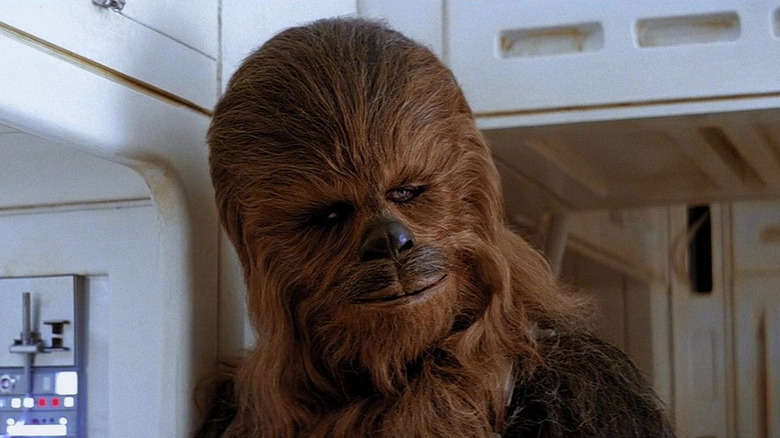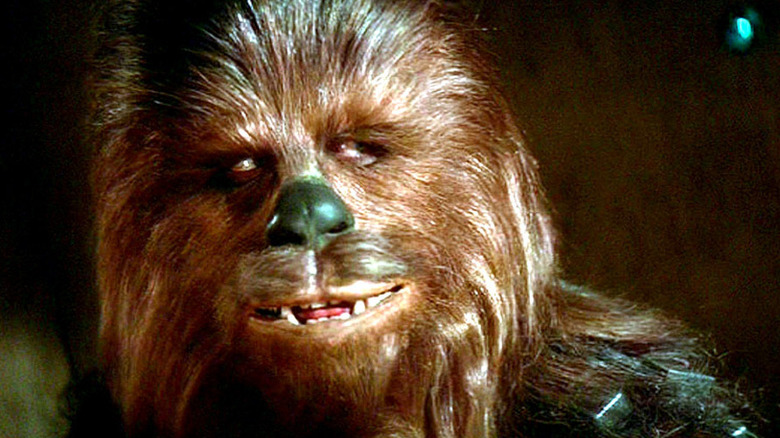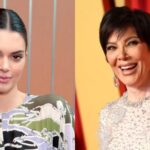While you could point to any number of reasons for the culture-defining success of “Star Wars” (John Williams’ iconic score, for instance, or the compelling blend of science fiction and Arthurian myth), the aesthetics have to be right near the top of the list. From Colin Cantwell’s incredible spaceship designs to Ralph McQuarrie’s early concept art for planets, lightsabers, and characters like Luke Skywalker and Darth Vader, the look and feel of 1977’s “Star Wars: Episode IV — A New Hope” helped shape the unique universe from the very beginning.
Eventually, though, those initial designs had to be handed off to model makers, prop masters, and other practical effects artists. That includes creatives like make-up artist Stuart Freeborn, who worked with George Lucas to create the practical look for Chewbacca. A veteran of the movie industry going back to the 1940s, Freeborn had particularly relevant experience from his experience working on Stanley Kubrick’s “2001: A Space Odyssey,” a film that gave him the exact knowhow necessary to create the first ever Chewbacca costume for Peter Mayhew.
“I used pretty much the same principle as with the ‘2001’ apemen for Chewbacca,” Freeborn told Starlog Magazine in a 1986 interview, “the only difference being the exterior. Instead of a monkey face, Chewbacca has a different kind of face, and furry rather than ape-like. Otherwise, it was exactly the same inside.”
George Lucas’ own pets influenced the design of Chewbacca
While Freeborn’s experience on the apemen of “2001” helped him craft the basics of the Chewbacca suit, Lucas had something specific in mind for the character’s face.
“George mentioned he had a dog and a cat, stating he envisioned the Wookie [sic] as dog-like,” Freeborn told Starlog in 1986. Going off of that basic pitch and his previous work on “2001,” the make-up artist whipped up a basic sculpture to demonstrate what he had in mind. While Lucas signed off on the look at first, he came back later with a new angle.
“He had studied his cat and concluded that Chewie should be a cat creature,” Freeborn said. “I tried a feline version but he still wasn’t convinced. ‘Couldn’t you try to combine the two?’ he asked me.” That final idea, blending the cat and dog faces with the furry alien body, ended up being the winner, yielding the Wookiee design fans know and love today.
As an added bit of Lucas trivia, some fans may already know that the dog in question — an Alaskan Malamute named Indiana — provided inspiration for two different franchises. While he lent his likeness to Chewbacca, he gave his name to the protagonist of the “Indiana Jones” movies.
The original Chewbacca design has barely changed in decades
McQuarrie’s original art for the character who would become Chewbacca — initially conceived as Han Solo, then an alien — was changed greatly before the character appeared on the screen (though that first pass later inspired the character of Zeb in “Star Wars Rebels”). However, once Freeborn got to work and came up with the final Chewbacca suit, things were set. After decades of “Star Wars” films and two additional trilogies, plus the “Solo: A Star Wars Story” spin-off movie, which features the hairy guy heavily, that original design has barely changed.
“They’re basically being built the same as the original Chewie,” creatures supervisor Dave Elsey said in a featurette on the making of “Star Wars: Episode II — Revenge of the Sith.” In that film, many more Wookiee costumes had to be made for the massive battle between the hairy aliens and the Separatist droid army on the Wookiee homeworld of Kashyyyk. Mayhew reprised the role of Chewbacca for the character’s brief prequel-era appearance, donning a suit very much like the one from his original trilogy days.
When it came time to bring Chewie back yet again for “Star Wars: Episode VII — The Force Awakens,” the design once again stayed consistent. In a different making-of featurette for that film, supervising animatronics designer Maria Cork said that the team’s goal was to “keep it simple” and “copy completely” the original design. Mayhew commented that while the design was essentially the same, it was “better” and “lighter,” likely thanks to several decades of advancements in prosthetics and movie make-up. Even still, Freeborn’s version from the ’70s continues to be timeless.











